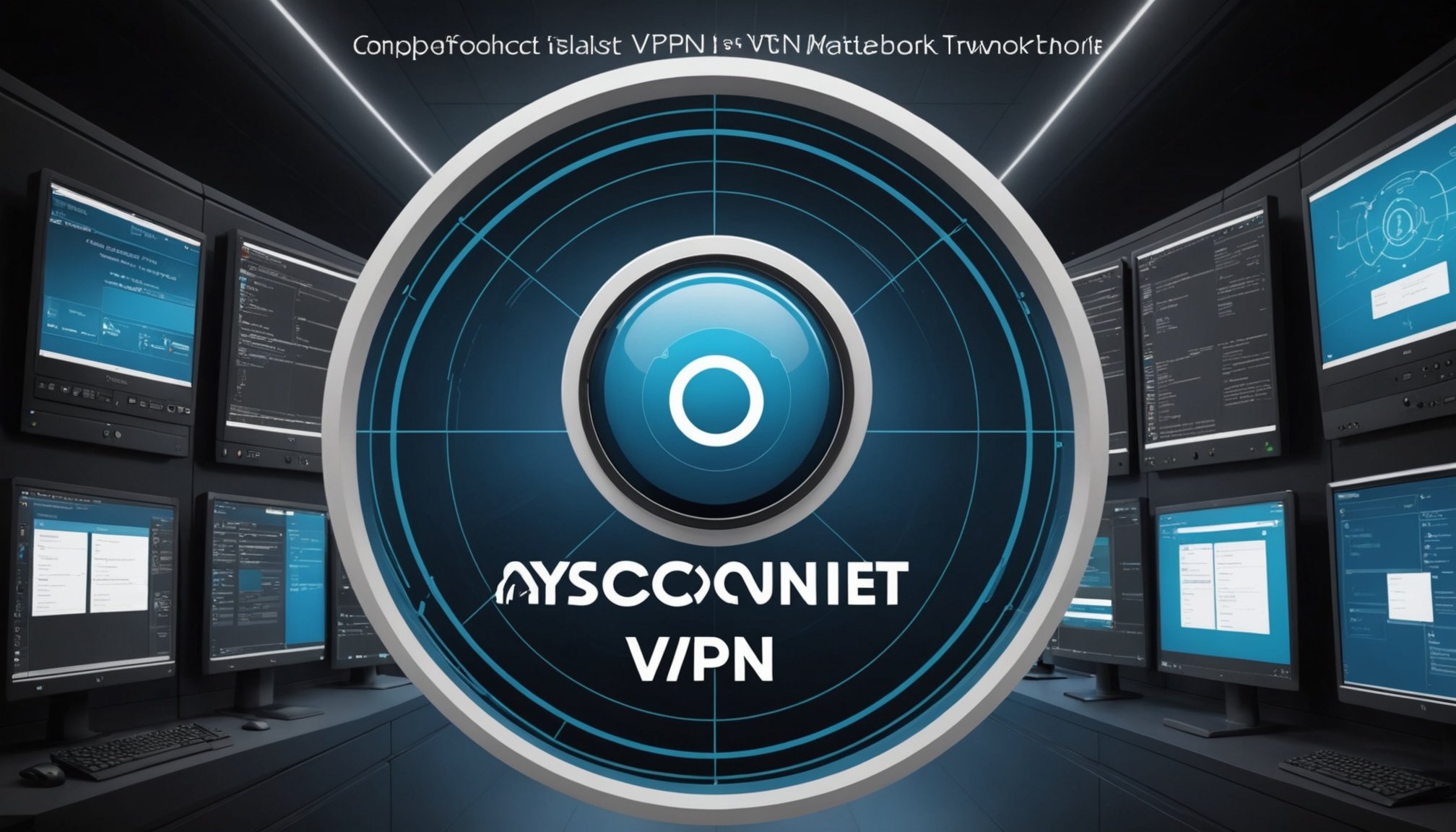Understanding Cisco AnyConnect and Its Benefits
Cisco AnyConnect is a versatile VPN solution that offers significant enterprise security benefits. This robust software is designed to provide secure remote access to corporate networks, enabling employees to connect safely from any location. By integrating comprehensive security features, Cisco AnyConnect maintains the confidentiality and integrity of data transmitted over enterprise networks.
The VPN benefits of using Cisco AnyConnect extend beyond simple remote access; they include enhanced security measures such as encryption and multi-factor authentication. These features ensure that sensitive enterprise data remains protected against potential cyber threats. Furthermore, the VPN supports a wide range of devices and operating systems, providing seamless connectivity for users regardless of their hardware.
Have you seen this : Unlocking kubernetes rbac: your ultimate step-by-step manual for fine-tuned access control
One of the core functionalities of Cisco AnyConnect is its ability to monitor network activity continuously. This enables IT departments to detect and respond to suspicious activities swiftly, thereby reinforcing overall network security. Additionally, the solution allows for customizable policies that can be tailored to meet specific security requirements of different organizations.
By leveraging Cisco AnyConnect, companies can assure their workforce of secure remote access while minimizing risks associated with data breaches and unauthorized access. In summary, it is an essential tool for any enterprise looking to enhance its network security framework.
Also to discover : Achieving unmatched uptime: an ultimate guide to configuring postgresql with read replicas
Preparing for VPN Implementation
Implementing Cisco AnyConnect for your enterprise requires a well-structured pre-implementation checklist to ensure a smooth rollout. A crucial first step is to assess your network readiness. This involves evaluating the current network infrastructure for compatibility with Cisco AnyConnect’s specifications. Ensure that your system meets the minimum system requirements, including appropriate hardware configurations and supported operating systems.
Before proceeding, it’s essential to outline a detailed pre-implementation checklist. This checklist should cover necessary software updates, security patches, and the availability of network resources. Understanding these prerequisites will prevent potential hiccups during deployment. Additionally, checking for any existing security protocols and ensuring they align with Cisco AnyConnect’s standards is vital for integration.
Assessing your network infrastructure enables IT teams to identify potential bottlenecks or compatibility issues. Check for adequate bandwidth and reliable network connections, as this will facilitate a seamless connection for users. This proactive approach helps in addressing possible technical challenges early in the process.
By preparing thoroughly with a comprehensive pre-implementation checklist, organizations can lay a robust foundation for Cisco AnyConnect’s integration. Ensuring network readiness and meeting system requirements not only streamlines the setup process but also enhances overall enterprise security from the outset.
Step-by-Step Configuration Guide
When setting up Cisco AnyConnect, a methodical approach ensures a secure and reliable VPN connection. Begin by downloading the Cisco AnyConnect Client from a trusted source. Installation is straightforward, guided by on-screen prompts ensuring compatibility with your operating system. Upon completion, launch the application to configure essential settings.
VPN configuration steps are critical for establishing secure connectivity. Enter your VPN server details as provided by your IT administrator. Verification against a list of approved servers may be necessary to prevent unauthorised access. Follow with user authentication credentials, such as a username and password, or multi-factor authentication to bolster security.
To optimise security, align your configurations with recommended security protocols. These include setting encryption levels to protect data in transit and enabling firewalls to shield against intrusions. Additionally, consider utilising network segmentation to limit access to sensitive areas.
For enterprise use, it is advisable to engage with IT teams for tailored settings fulfilling corporate compliance standards. Regular updates and patches can maintain the security integrity of connections. By following these steps, organisations can effectively leverage Cisco AnyConnect for robust network security and efficient remote access.
Troubleshooting Common Issues
VPN troubleshooting is essential to maintaining connectivity and ensuring seamless operation for users. Some common issues include connectivity drops, authentication failures, and configuration mismatches. Network administrators can resolve these by carefully diagnosing the problem and applying systematic fixes.
To address connectivity drops, first check the user’s internet connection stability, as intermittent issues can lead to VPN disruptions. Troubleshooting often starts with verifying that all network hardware is functioning correctly and ensuring that the VPN client is up-to-date.
For authentication failures, ensure the credentials entered are correct. Network administrators should verify that user accounts are active and properly configured. In some cases, resetting the password or re-enabling multi-factor authentication may be necessary.
Configuration mismatches can be rectified by reviewing the settings on both the client and server sides. Ensure they are correctly aligned with the organization’s security protocols. It may involve revisiting security parameters like encryption levels and firewall settings.
For further assistance, consider resources for obtaining technical support from Cisco, such as their online knowledge base and direct customer service help. By thoroughly understanding these procedures, organizations can minimize downtime and enhance the reliability of Cisco AnyConnect implementations.
Best Practices for VPN Security
Maintaining robust VPN security best practices is crucial for protecting enterprise networks. Start by implementing essential security measures, such as enabling encryption protocols to shield data in transit. Strong encryption ensures that information remains confidential, even if intercepted by unauthorized parties.
User training is another pivotal component of VPN security. Educating employees about recognizing phishing threats, maintaining secure passwords, and adhering to network security protocols significantly minimizes potential vulnerabilities. Regular training sessions empower users, making them the first line of defense against security breaches.
Periodic audits and system updates also play a fundamental role in reinforcing security protocols. By conducting regular evaluations of the network security posture, organizations can identify weaknesses and implement the necessary patches and updates promptly. This proactive approach helps in mitigating risks linked to evolving cyber threats.
Lastly, ensure that all devices connected to the network are equipped with up-to-date antivirus software and firewall settings. Such applications act as an additional security layer, intercepting potentially harmful activities before they can damage the system. By applying these best practices, enterprises can safeguard their VPN environments and ensure continued data protection and network integrity.
User Testimonials and Case Studies
User experiences with Cisco AnyConnect provide valuable insights into its practical applications and effectiveness. In reviewing case studies, companies across various industries have reported significant improvements in network security and secure remote access.
For instance, a global financial services firm successfully implemented Cisco AnyConnect, bolstering its data protection measures. This VPN success story highlights the transition from a conventional network framework to a secure, accessible environment. The firm noted a marked reduction in security breaches and increased compliance with data protection regulations.
Real-world user testimonials emphasize the benefits of enhanced remote work capabilities. Many employees express satisfaction with the secure access to internal resources, which allows them to maintain productivity from any location. Feedback often includes praise for the ease of use and the seamless VPN connection experienced with Cisco AnyConnect.
Enterprises have also faced challenges, such as integrating with legacy systems. However, the adaptability of Cisco AnyConnect has been crucial. One case study reveals how a multinational company navigated compatibility issues by strategically updating its infrastructure, thus ensuring a smooth transition.
These experiences collectively underscore the reliability and robustness of Cisco AnyConnect, highlighting its role as an indispensable tool in modern enterprise security solutions.
Conclusion and Future Considerations
In the ever-evolving landscape of network security, the future of VPNs remains a focal point for enterprises aiming to secure sensitive data. As technology advances, new security measures are anticipated to address emerging threats. The need to adapt to these evolving security threats is paramount. By staying abreast of innovations, organisations can better safeguard their networks.
Emerging trends point towards increasing integration of AI and machine learning in VPN technology, providing enhanced capabilities to predict and mitigate potential threats. These advancements ensure a proactive approach to network security, offering an additional layer of protection against evolving threats. Keeping updated with these technologies is crucial for organisations aiming to maintain robust security frameworks.
Moreover, anticipating future challenges involves recognising the necessity for consistent updates in VPN software, ensuring compatibility with contemporary security standards. Organisations should also consider scalable solutions that adapt to fluctuating network demands. As enterprises continue to adopt remote work models, understanding these dynamics will prove invaluable.
By investing in research and understanding industry practices, companies can effectively manage the balance between innovation and security. This forward-thinking approach not only enhances current protections but also ensures preparedness for future developments within the domain of enterprise security.











